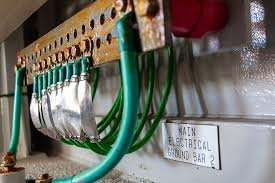Understanding Grounding in the Electrical Industry
Grounding is an essential safety measure in the electrical industry. It is a process of connecting electrical equipment and conductors to the earth to ensure safety and protection against electric shock. Grounding also helps in maintaining the stability of an electrical system and reducing the risk of electrical fires.
Why is Grounding Important?
Electrical grounding is important for several reasons. Firstly, it provides a low impedance path for fault currents, which helps in tripping protective devices such as fuses and circuit breakers. Secondly, it reduces the risk of electric shock by directing fault currents away from equipment and people. Thirdly, grounding helps in reducing electromagnetic interference (EMI) and noise in electrical circuits, which can cause equipment malfunctions and data errors.
Types of Grounding
There are several types of grounding used in the electrical industry, including:
Equipment Grounding
Equipment grounding involves connecting the non-current carrying metal parts of electrical equipment, such as enclosures, frames, and racks, to the earth. This is done using a green or bare copper wire called the equipment grounding conductor (EGC). The EGC provides a low impedance path for fault currents, which helps in tripping protective devices and reducing the risk of electric shock.
System Grounding
System grounding involves connecting the neutral point of a power system to the earth. This is done using a grounding electrode, which can be a rod, plate, or wire buried in the earth. System grounding helps in stabilizing the voltage of the electrical system and reducing the risk of electrical fires due to lightning strikes or other voltage surges.
Ground Fault Protection
Ground fault protection is a safety measure that detects and interrupts ground faults, which occur when a current-carrying conductor comes into contact with a grounded surface or conductor. Ground fault protection devices, such as ground fault circuit interrupters (GFCIs) and ground fault relays, are used to protect people and equipment from electric shock and damage.
Conclusion
Grounding is an essential safety measure in the electrical industry that helps in reducing the risk of electric shock, equipment malfunctions, and electrical fires. There are several types of grounding used in the industry, including equipment grounding, system grounding, and ground fault protection. Proper installation and maintenance of grounding systems are crucial for ensuring safety and reliability in electrical systems.

